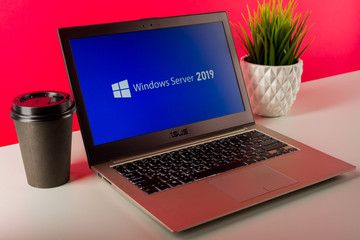
6 Things You Need to Know about Windows Server 2019
Recently, Microsoft announced the launch of its latest Server-based offering; namely Windows Server 2019. Additionally, it also allowed the public to preview the features and advancements in the most recent iteration of Windows Server, which is to be launched next year.
From changes in storage replica and containers, to improved storage spaces and failover clustering, the upcoming version has several new features. In this article, we will be looking at the 6 most notable upgrades and new features.
(Note: As part of the Windows Insider Program, there are several Server 2019 preview builds available for download for registered Insiders.)
New Graphical User Interface
Windows Server 2016 had a clear lack of graphical user interface, in both the base version and the semi-annual channel versions. This proved to be quite a surprise for many an enterprise that had begun to roll out the latter versions, which supported ServerCore and Nano configurations, which do not have a GUI. It professional will be able to experience a desktop graphical user interface, as well as the aforementioned Nano and ServerCore versions.
New Failover Clustering Features
Windows Server 2019 comes with 2 failover clustering features. Number one is the ability to move clusters between domains. All the previous versions of server forced administrators to first destroy the existing clusters, and recreate them in the preferred domain. This is not necessary anymore, as Server 2019 will allow the entirety of the network cluster to simply shift between domains, without having to first deconstruct the cluster itself.
The second feature is the availability of historical reporting, with the permission to trend up to a year’s data within a failover cluster. This data can include the primary Storage Spaces Direct metrics. This feature negates the need for third-party monitoring solutions or an SCOM (System Center Operations Manager) deployment.
Storage Migration Service
Previous versions of Windows Server lacked options for data migration, when transferring from older storage platforms and systems. This used to cause administrators to keep running the older models simply because it would be either too slow or just impossible to migrate data manually and most likely racked with service interruptions.
The Storage Migration Service is a new role that comes with both Windows Server Standard and Datacenter. It is a job-based proxy and orchestration that does the following:
- Allow admins to inventory their existing servers for security, network and data settings.
- Migrate the security, network and data settings to a new target through the SMB protocol.
- Assume the old server’s identity completely, while putting the old source out of commission in a way that leaves applications and users unaware of the migration and unaffected by it.
Additionally, the Storage Migration Service (SMS) handles all the common subtleties and issues that are characteristic of a migration; including network addresses, security settings, local security principles, names and more.
Security Improvements
The latest version of Windows Server is equipped with Windows Defender Advanced Threat Protection (ATP), which goes through common vectors to catch security risks and breaches, in order to block and press alerts against malicious attacks. Providing deep platform response actions and sensors, and making kernel and memory level activities visible, the feature takes action against harmful elements in compromised machines.
Incidentally, Windows 10 users have already been receiving Windows Defender Advanced Threat Protection features over the course of several months. By making Windows Defender ATP a part of the Windows Server 2019 suite will let administrators take advantage of security integrity-related components, Storage and network transport to prevent potential compromises on the Windows Server 2019 systems.
More Efficient and Compact Containers
The latest version of Server will have a much-improved Windows ServerCore model, with a reduced image size. As part of the most recent Insiders build, Microsoft has converted a number of non-critical components into more optional components inside the core edition. In addition to this, the optional components from the Windows Server Core container images have also been removed.
The result of the footprint reduction has been an improvement in the overall usability and deployment time. With fewer bloated servers and more efficient, as well as thinner containers, IT operations overhead has also been reduced.
Project Honolulu
The latest server management tool, codenamed Project Honolulu, will be formally released as part of Windows Server 2019. It is basically a central console that lets IT professionals to easily and efficiently manage servers in their environments.
Some common benefits of Project Honolulu, as relayed by early adopters, include management simplicity, task-rolling, and Windows Services management. Tasks such as performance monitoring and server configuration are streamlined considerably, and made easier for admins, to manage on their own server environments.
For IT professionals looking to expand their skills to include functional Windows Server knowledge and learning, can pursue Windows Server certification as a learning path. Additionally, Server certification is ideal for server admins looking to understand Windows Server concepts just in time for the Server 2019 launch.
